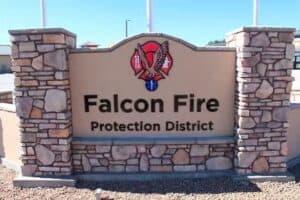Almost two months after the Black Forest fire started, it is still the topic of discussion, especially among firefighters who fought the blaze. The firefighters are not only talking about their experiences during the fire, but also the lessons they learned and hope to share with the community.Mitigation worksFirefighters have long preached the message of wildfire mitigation: making structures more resistant to wildfires by creating defensible space around buildings and using fire-resistant construction and landscaping materials. In fact, radio transmissions during the Black Forest fire indicated that firefighters repeatedly employed specific mitigation techniques to help protect homes. Crews moved fuels away from structures and created fire breaks, even as fire moved toward them. Property owners who had already done mitigation work saved firefighters time and effort; and, in many cases, helped save their own homes.Effective mitigation ìmakes a big difference,î said Curtis Kauffman, FFPD battalion chief. In an email, Glenn Levy, deputy chief, agreed with Kauffman. ìThere is no question that mitigation made a huge difference in our ability to save homes,î Levy said. ìMitigation allows firefighters to have a fighting chance to save a home, redirect the fire away from residences and ultimately extinguish the fire.î However, he also noted that, at times, the fireís intensity and erratic behavior negated mitigation efforts. ìThe amount of fire and amount of heat in many places made the area untenable for firefighters and equipment,î Levy said. ìBecause of that; sadly, homes were lost. However, on the whole, mitigation was crucial during this fire and is the reason many more homes were not lost.îFirefighters are available to provide free wildland mitigation assessments to residents. For more information, email Vernon Champlin, fire marshal, at vchamplin@falconfirepd.org, or call 719-495-4050.Strengthening building codesDiscussions are already under way about building codes in FFPD and Black Forestís wildland urban interface. The WUI is where homes meet heavy vegetation like forests; where structures are more susceptible to devastating wildfires. Following the Waldo Canyon fire, Colorado Springs changed its building codes to require the use of fire-resistant materials for new homes being built in its WUI. Now, the Falcon and Black Forest fire protection districts are looking to follow suit. Chief Trent Harwig responded in an email: ìFalcon Fire is already working alongside Black Forest Fire to discuss future code requirements in the interface areas we protect. As we begin to rebuild, we will assure that structures are built and developments are mitigated appropriately to make them more defendable during wildfires.îLevy added, ìWe need to look at strengthening our building codes for homes built in the Wildland Urban Interface, continue to work with residents on mitigation, inform our residents on pre-incident home and property assessment, work with our communities on pre-evacuation information and definitions, and work together in a partnership to make the Falcon fire district as fire safe as possible.




